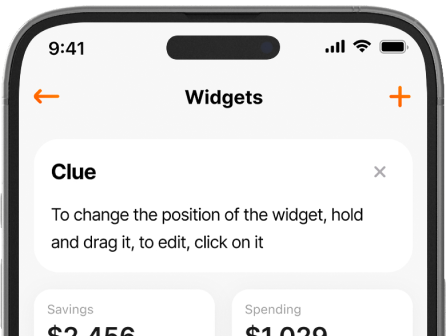If you need more money for something, you generally have two options: earn more or spend less. Of those two, you probably have more control over your spending, so that’s the best place to start. However, this doesn’t necessarily mean that you have to be a complete minimalist and forego everything you like. Some measures to cut expenses, like canceling services you don’t use and switching to cheaper brands, will barely be noticeable. Others may require you to change your habits over time, like training yourself to look for better deals, resisting impulse buys, and considering the real impact of your spending.
Exactly what expenses you can cut will vary depending on your exact situation, but there are a few overarching principles to keep in mind as you try to rein in your spending:
- Make sure you have concrete goals and that you can track your progress towards them. This makes the abstract “saving money” idea much more concrete.
- Look at your expenses over the long term. How much does something cost you in weekly, monthly, or even yearly terms? Even small purchases can add up if they’re repeated frequently.
- Try to think of expenditures in terms of what you can’t do with the money you’re spending—the “opportunity cost.” Alternatively, think of the money in terms of the hours you worked for it.
- Habits take time and effort to build. Try to set incremental goals for yourself and reward yourself for meeting them. Doing it gradually and minimizing disruption is fine, and so is making a dramatic one-time cut—it depends on what you think will work for you.
- Sometimes you just have to say “no” to yourself.
Your first priority: high-interest debt

Let’s say you have a $1,000 credit card debt with a 20% APR. If you pay $30 a month ($25 or 3% is a common minimum payment), it’ll take you 50 months (6+ years) to pay off a total of $1,472. That $472 that’s accumulated in interest is essentially pure loss for you—you’re just paying more for purchases you’ve already made.
Whatever money you can save on other things should generally go towards paying down any high-interest debts you may have, though you also shouldn’t neglect to build up at least an emergency fund to help prevent you from getting pushed back into debt. Getting your interest payments down as low as possible will cut your expenses on loan payments by quite a bit in the long run.
If your debt is being carried on credit cards (which are probably the highest-interest loan you have), you may want to consider getting a card that has a low introductory interest rate on balance transfers. You can then transfer your debt from the high-interest cards to the low-interest ones, stopping interest from accumulating too much as you try to pay it off.
Other loans, like mortgages, auto loans, student loans, and personal loans, can often be refinanced, negotiated, or consolidated—all of which essentially mean that you get a lower interest rate. Aside from the time you have to spend on the research and paperwork, this is a pretty painless way to reduce your spending, as you’re basically just getting a better deal for yourself on something you’ve already bought.
Trying to avoid high-interest debt at all costs is a good rule for the future. In emergencies or tight spots, it can be useful to have it as a fallback, but it makes purchases a lot more expensive over time.
Easy ways to cut expenses
Putting yourself on a budget doesn’t necessarily have to involve a lot of self-denial. There’s low-hanging fruit where you can cut your spending without causing too much pain, and that’s a good place to start.

Identify wasteful/useless spending
Remember that magazine/software/course/gym you subscribed to a while ago? No? Well, they didn’t forget, and they’ve been billing you regularly regardless of whether or not you’re using them. Check your monthly bills and cancel anything that doesn’t make sense to keep. Also keep an eye out for generally useless costs like extended warranties, insurance up-sells, and add-ons to things like phone plans.
Shop around a little
Different stores, both online and offline, often have different prices for identical items, and, over the long run, you can save a lot by just switching up your shopping habits and checking out what different places have to offer. You don’t have to keep a spreadsheet and track price changes unless you enjoy doing that for some reason. If you vary your shopping habits and pay attention, you’ll get a sense of where the best deals are.
Find cheaper alternatives
Yes, name brands are generally trustworthy and have good marketing, but most products don’t necessarily survive a blind comparison with a generic. Generic medicines, store-brand food, and no-name clothes are all generally fine, and it’s at least worth trying them to see if they work for you.
This even applies to technology products like phones and computers. The latest iPhone is great, but your user experience probably won’t be significantly worse if you buy a phone from an earlier iPhone generation, or even switch to a budget-oriented Android. The gap between cheap and expensive technology is getting steadily smaller, and being open to a slight downgrade could save you quite a bit.
Then there are less obvious substitutions you can make without significantly impacting your quality of life. You might be able to replace your cable with a suite of streaming services, your haircuts with visits to a stylists’ school, your gym membership with running in your local park and body-weight exercises, your clothes shopping with trips to secondhand stores, your incandescent lightbulbs with LEDs, your movie theater visits with at-home movie nights, et cetera.
Most of the easier cost-cutting measures will come naturally if you get into the mindset of asking yourself, “Is there a way to get this more cheaply?” every time you make a purchase. If there’s not an easy, acceptable substitute, that’s fine—but if you do some exploring, you’ll often find that there is.
Renegotiate
There are actually a lot of bills that you can negotiate on, and you don’t have much to lose by calling up customer support and asking for a discount. If you’re thinking about switching internet, phone, or utility companies, for example, call and see if you can get a better deal from your current provider. Even if you’re not planning to switch, asking for a deal can still work surprisingly often.
Harder ways to cut expenses

There’s no getting around it: sometimes you’ll have to stop yourself from spending money on things you want. The alternatives may not be attractive (or even exist), but sometimes there are things you simply can’t afford, and you’ll need to put constraints on yourself.
Make a budget
Given unlimited money, you might eat at your favorite restaurant for every meal and buy the newest tech the day it comes out, but even without a budget you probably won’t do that because you know you can’t afford it. Budgeting is just an extension of these natural limits.
One of the best ways to control your spending is to make a budget with a hard daily, weekly, or monthly cap on certain categories. That might mean using something like the envelope system, where you set aside a certain amount of cash and don’t spend more than that. Alternatively, you can track your spending using an app or monitoring balances in different bank accounts set aside for different purposes.
Alternatively, you can use a “savings-first” or “pay yourself” strategy, where you decide how much you’re going to save that month, put it away, and figure out ways to stretch your remaining money to cover your expenses. This approach requires less planning upfront, but you might have to put in some work later to make sure you have enough money left for vital bills.
Create good money management routines

Humans are creatures of habit, and when we get busy or stressed, we often fall back on whatever routines feel natural to us. Budgeting ultimately requires changing how you approach money and shopping, much in the same way that building an exercise routine requires you to push yourself to do it until it becomes part of your day. Here are a few habits you may want to cultivate:
- Make shopping lists and stick to them. Try not to walk out of a store with more than you came in for.
- Whenever practical, check for better deals at other stores or online.
- Check up on your finances often. Put your financial apps on your phone’s home screen. Set up alerts from your banks and credit cards. Instead of absent-mindedly opening Facebook when you’re bored, log into your bank instead and get an idea of how well you’re sticking to your budget.
- Keep an eye out for free or cheap alternatives. Don’t be afraid to get creative—if you have an idea, give it a shot. You can always go back to the pricier option later.
- Before you make a purchase that you don’t necessarily need, ask yourself “Will I really use this?” If possible, sleep on it and see how much you want it once you’re removed from the situation.
- Don’t treat extra income as extra money to spend. Put most or all of it towards your savings goals.
- Have a “no-debt” policy (excluding larger items like mortgages and reasonable auto loans). If a purchase on credit goes over what you have in your bank account, don’t do it unless you have no other choice.
Making long-term changes
Just like eating and exercise, managing your money is something you have to develop a sense of over time. If you really want to spend less and save more, you can’t take a short-term approach with the expectation that you’ll be able to spend more after you budget for a while. If there are things you enjoy doing, build them into your budget: save for your vacation, set aside a reasonable amount of money for going out every week, et cetera. It’s easy to cut back for a few months, see that you’re doing well, and slip back into old habits, but keeping track of the progress you’ve made and building healthy money routines will help you sustain your spending cuts over the long term.
If you haven’t already, it’s important to examine your expenses, identify areas where you over-spend, and make plans to cut back. To cut big monthly expenses is important, but the hardest ones, and potentially the ones with the greatest impact, are the small daily expenses that add up. Impulse buys, eating meals out, shopping trips—they’re not necessarily things you have to give up completely, but they are things you have to control by planning out how much money you can spend.








